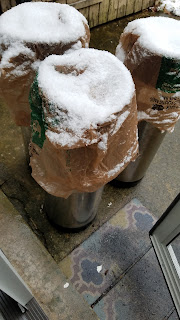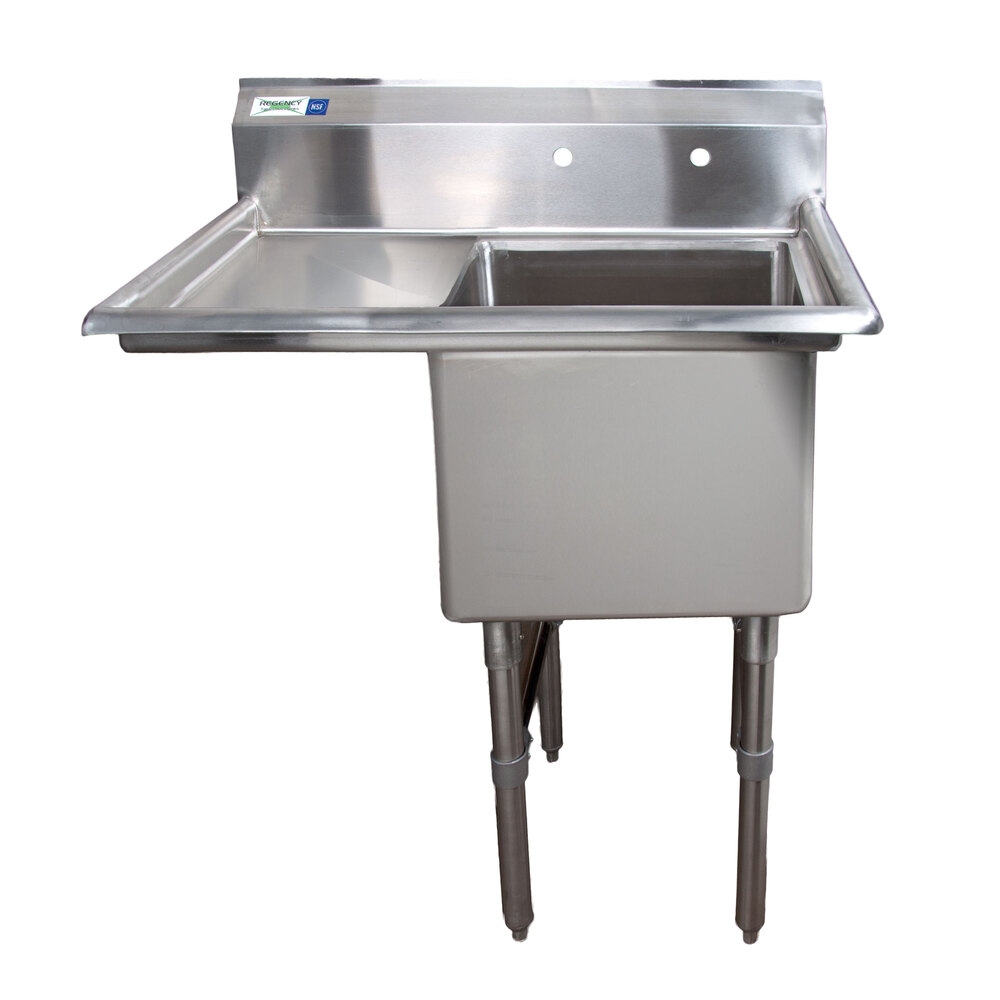Cellaring Warm-ish
The de facto storage room was our upstairs study. While I could keep it reasonably dark, it was on an upper floor and south-facing, so it got well into the 70s F during the early-summer days. I wasn't too thrilled about it, but sadly I had no choice. I gave the kegs an extra hit of CO2 before storage as a buffer against slight leaks. Sure, they might be a little overcarbed, but that's easy to fix.The basement was finished in about a month, so I moved the beer downstairs for somewhat cooler and more stable storage (upper 60s F). I gave the kegs a quick burp and all appeared to be holding pressure nicely. The contents still smelled like beer too, so I was confident the homebrew was doing OK.
Fast-forward to December. The brew room is functionally complete and I'm getting organized. I had three kegs of finished homebrew: a stronger Dead Guy clone, a pale ale and a mystery beer that wasn't labeled. I want to cool them down for sampling, but the new beer fridge won't fit 5gal kegs without removing all the shelves. I did say it was December, so outside they go.
 |
| Kegs in the snow |
The Dead Guy clone
This beer is an iteration on a Dead Guy clone I made for my wedding. The second anniversary brew was a bit stronger (8.2% ABV) and partial mash. It went from grain to keg in 20 days. When fresh, it was a bit boozy and had a raisiny character I didn't really care for. This one would definitely benefit from aging, and it did. |
| Dead Guy clone +256 days |
Verdict: Keep it around for now, but its dump date is not far off.
Blonde Ale
The next brew was a blonde ale I brewed in April for a club competition. It was a partial mash with some rye and Nelson Sauvin hops. It would eventually be served at a summer picnic, so I went light: 4.8% ABV and roughly 20 IBUs. Grain to keg in 16 days, plus an additional 5 days of dry-hopping.
This beer was great when fresh. It scored 41 points in the judging portion of the competition. My best score yet! But when the club-wide best-of-show rolled around 6 weeks later, it tasted noticeably different. The hops didn't pop like they did before. It finished in the middle of the pack. If it was this drastic after just a few weeks, I feared it would be undrinkable after a long cellaring.
 |
| Blonde Ale +212 days |
The good news: It was still drinkable
The bad news: It was also past its prime
Carbonation was still pretty good after a short burping. This keg didn't have a lot left in it. It poured cloudy, and I can only presume that some lingering sediment was stirred up. The beer still had that vinous aroma Nelson Sauvin is known for. The flavor was more grapefruity, reminiscent of Citra, which is odd since I used Magnum as the bittering charge and a bit of Sorachi Ace at flameout. No oxidation or other off flavors detected. Nevertheless, storage had not been kind to this summer gem.
Verdict: Dump. Not worth keeping the few pints left.
The Mystery Beer
The third keg wasn't labeled and felt about half full. I wasn't sure what I'd get when I opened the tap. Out came my base amber ale, a 5.5% ABV brew upon which I built my pumpkin-pie-spice ale. It's designed to be inoffensive, lightly hopped (~35 IBUs) and slightly malty so the added flavors stand out. It's a blank canvas; so much so that one judge in a competition said it wasn't bad, but it wasn't beer.
 |
| Base amber +296 days |
This was made in late February, so it had spent 296 days in the keg. Carbonation and clarity were both good. Not a lot of aroma, but it still had a slight malty flavor. No oxidation or off flavors. Still boring. Not awful, but not at its prime either.
Verdict: Keep for now. Might be good to cook with.
Conclusion: Colder is Better, But Time Will Always Win
Keeping beer cold is a no-brainer, but its not always possible. Beer can be - and often is - kept above serving temperature. Keeping it warm will accelerate aging. In the case of the Dead-Guy clone, that made for a better beer. If I make it again, I'll give it a few weeks of aging near room temperature. Nevertheless, too much of a good thing is often bad. All three brews are on a downward trajectory after many months of warm to slightly cool cellaring. Refrigeration would have certainly kept them longer, but degradation is inevitable.










































